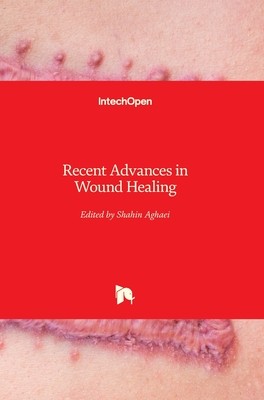
- We will send in 10–14 business days.
- Publisher: IntechOpen
- Year: 2022
- Pages: 216
- ISBN-10: 1839685727
- ISBN-13: 9781839685729
- Format: 17 x 24.4 x 1.4 cm, hardcover
- Language: English
- SAVE -10% with code: EXTRA
Recent Advances in Wound Healing (e-book) (used book) | bookbook.eu
Reviews
Description
The human wound-healing process could be divided into four discrete phases, which have also been indicated as the hemostasis, the inflammatory, the proliferation, and the remodeling phase. For a wound to be healed efficaciously, all four phases must sequentially happen at an expected time setting. Numerous aspects can hinder one or more stages of this procedure, thus can cause inappropriate or diminished wound healing. This book reviews the recent literature on the most significant factors that affect wound healing and the potential cellular and/or molecular mechanisms involved. The factors discussed include physiology of wound healing, interferon, stem cells and photobiomodulation, chronic venous ulcer, chronic fistula, bionanomaterials, topical antiseptic agents, including silver and sodium hypochlorite solution, diabetic ulcers, and nutritional supplements such as copper.
EXTRA 10 % discount with code: EXTRA
The promotion ends in 15d.14:20:56
The discount code is valid when purchasing from 10 €. Discounts do not stack.
- Publisher: IntechOpen
- Year: 2022
- Pages: 216
- ISBN-10: 1839685727
- ISBN-13: 9781839685729
- Format: 17 x 24.4 x 1.4 cm, hardcover
- Language: English English
The human wound-healing process could be divided into four discrete phases, which have also been indicated as the hemostasis, the inflammatory, the proliferation, and the remodeling phase. For a wound to be healed efficaciously, all four phases must sequentially happen at an expected time setting. Numerous aspects can hinder one or more stages of this procedure, thus can cause inappropriate or diminished wound healing. This book reviews the recent literature on the most significant factors that affect wound healing and the potential cellular and/or molecular mechanisms involved. The factors discussed include physiology of wound healing, interferon, stem cells and photobiomodulation, chronic venous ulcer, chronic fistula, bionanomaterials, topical antiseptic agents, including silver and sodium hypochlorite solution, diabetic ulcers, and nutritional supplements such as copper.


Reviews